Abstract
Previous data from our laboratory suggest that the transitional epithelium of the urinary bladder secretes and binds to its surface a glycosaminoglycan. The presence of this substance at the bladder surface markedly reduces the ability of microorganisms to adhere to the mucosa. Furthermore, this glycosaminoglycan can be removed (with acid) and replaced by intravesical instillation of a synthetic sulfonated glycosaminoglycan (heparin), whose presence is as effective as that of the natural glycosaminoglycan in reducing adherence. We conducted the current study with a different sulfonated glycosaminoglycan to determine whether the antiadherence activity is generalized to heparin congeners and whether the antiadherence effect of heparin is independent of its known anticoagulant activity. In this study we examined the sulfonated glycosaminoglycan, sodium pentosanpolysulfate, which lacks significant anticoagulant activity, and found it to have a mechanism of antiadherence analogous to that of heparin and almost equally as active on a weight basis.
Full text
PDF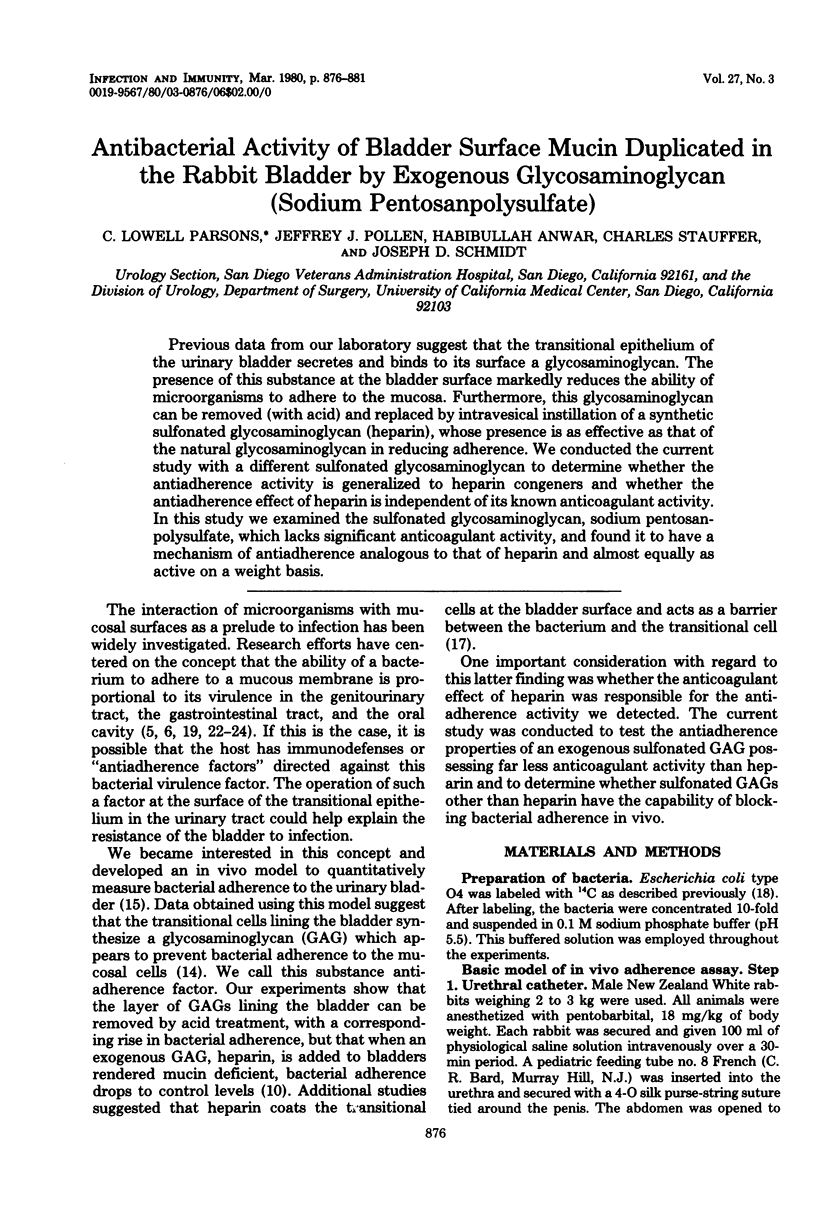
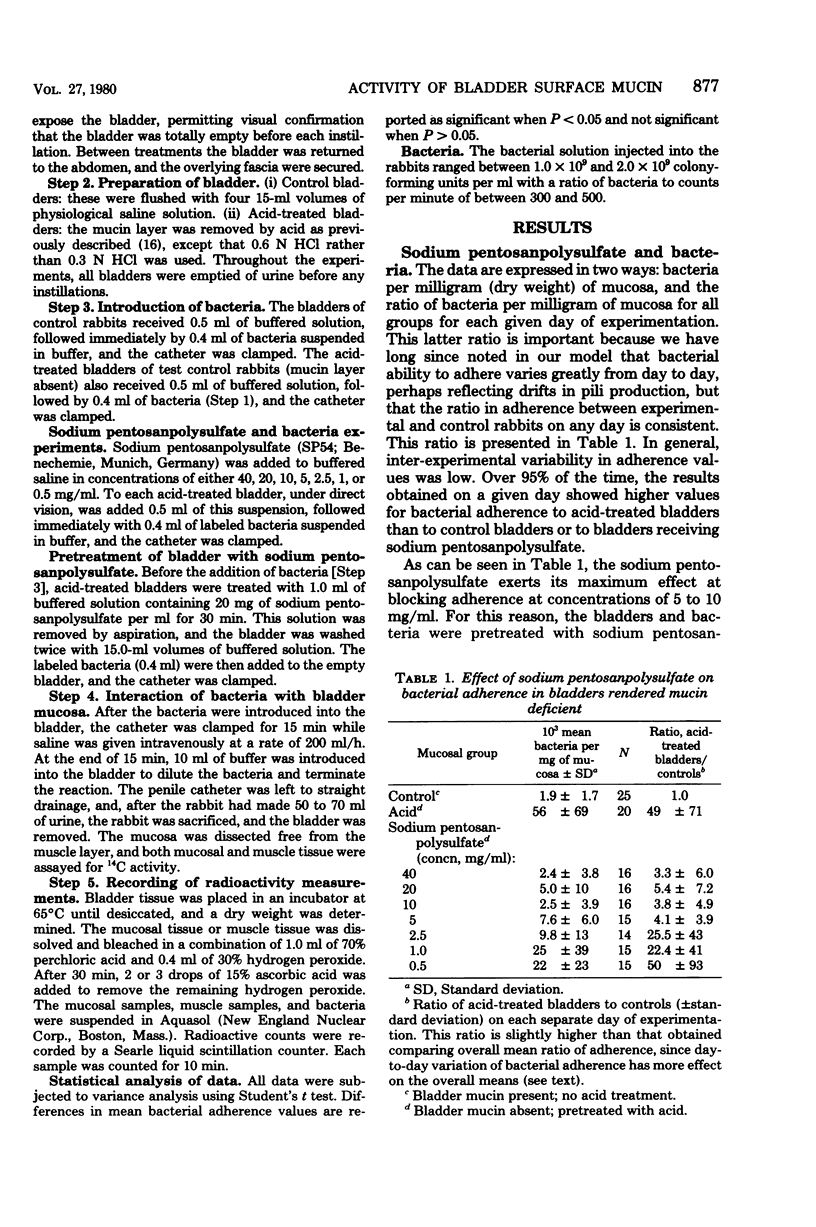
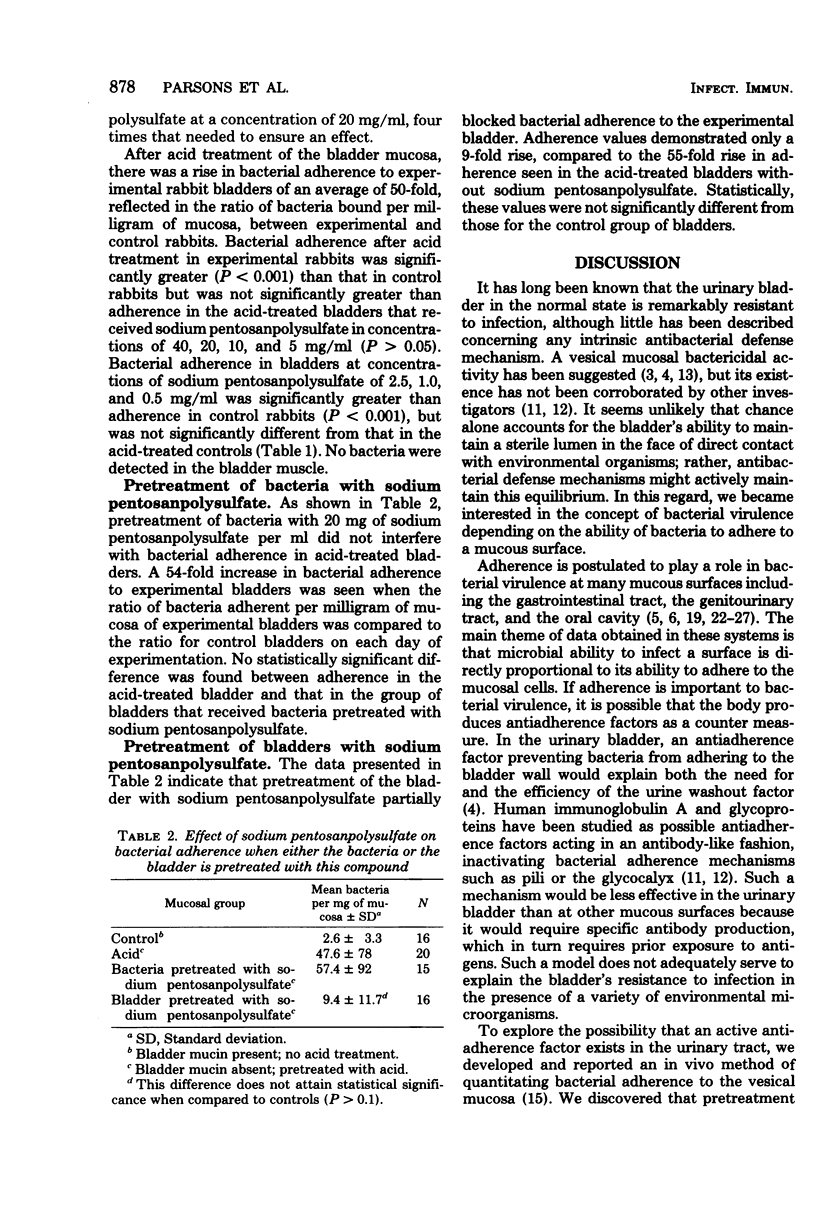
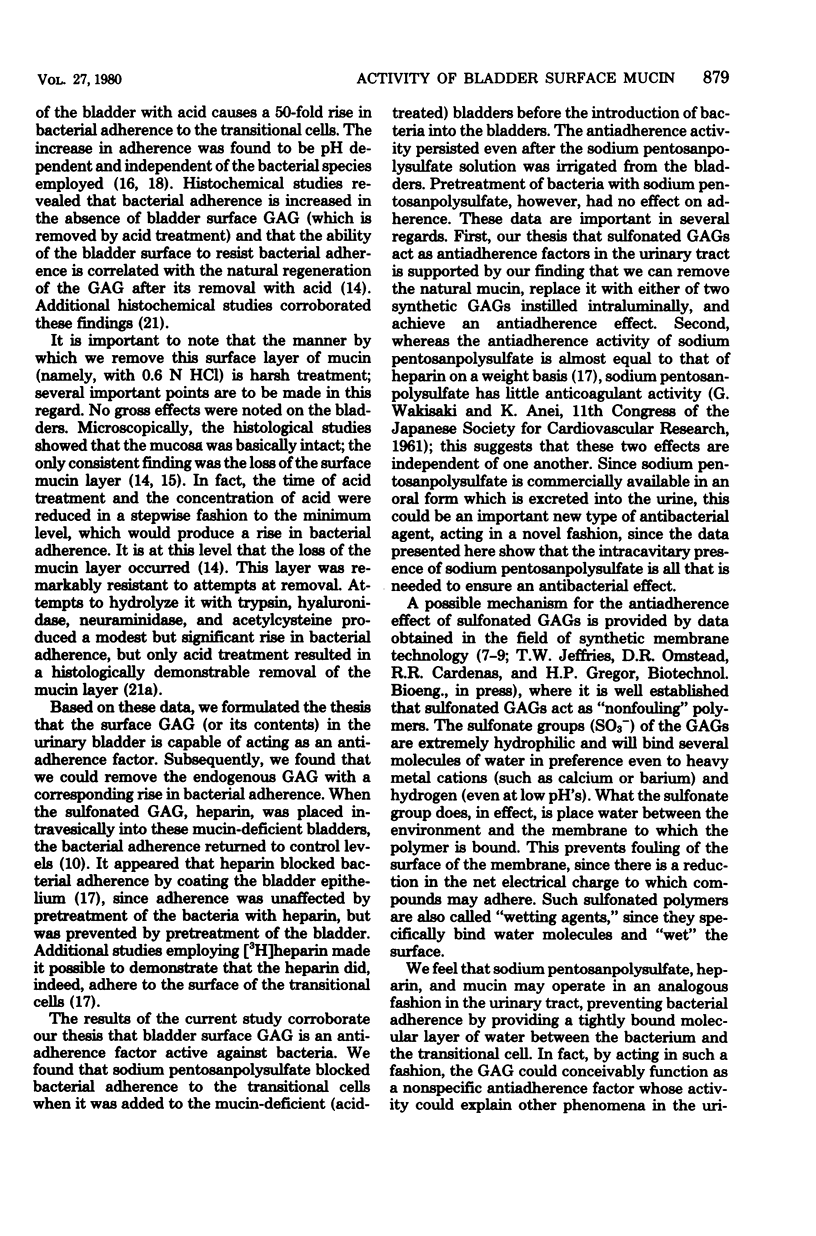
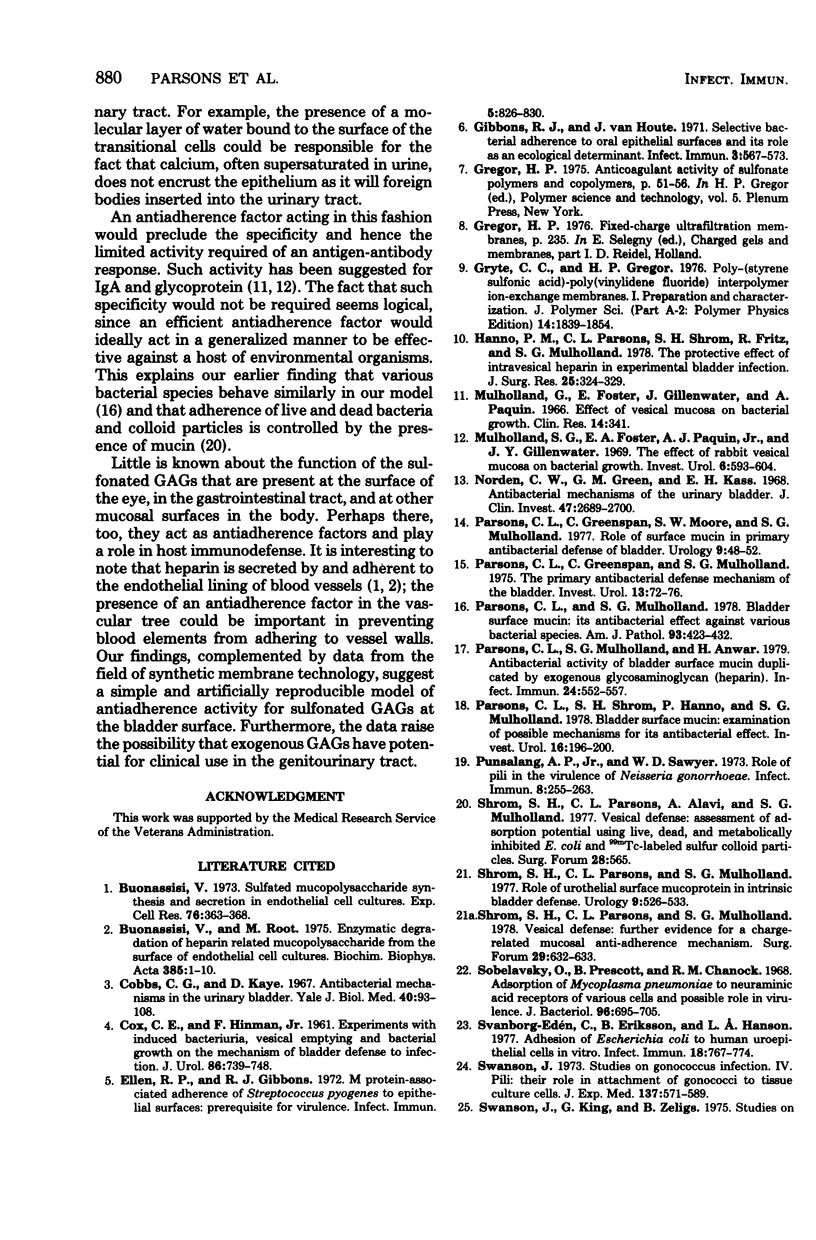
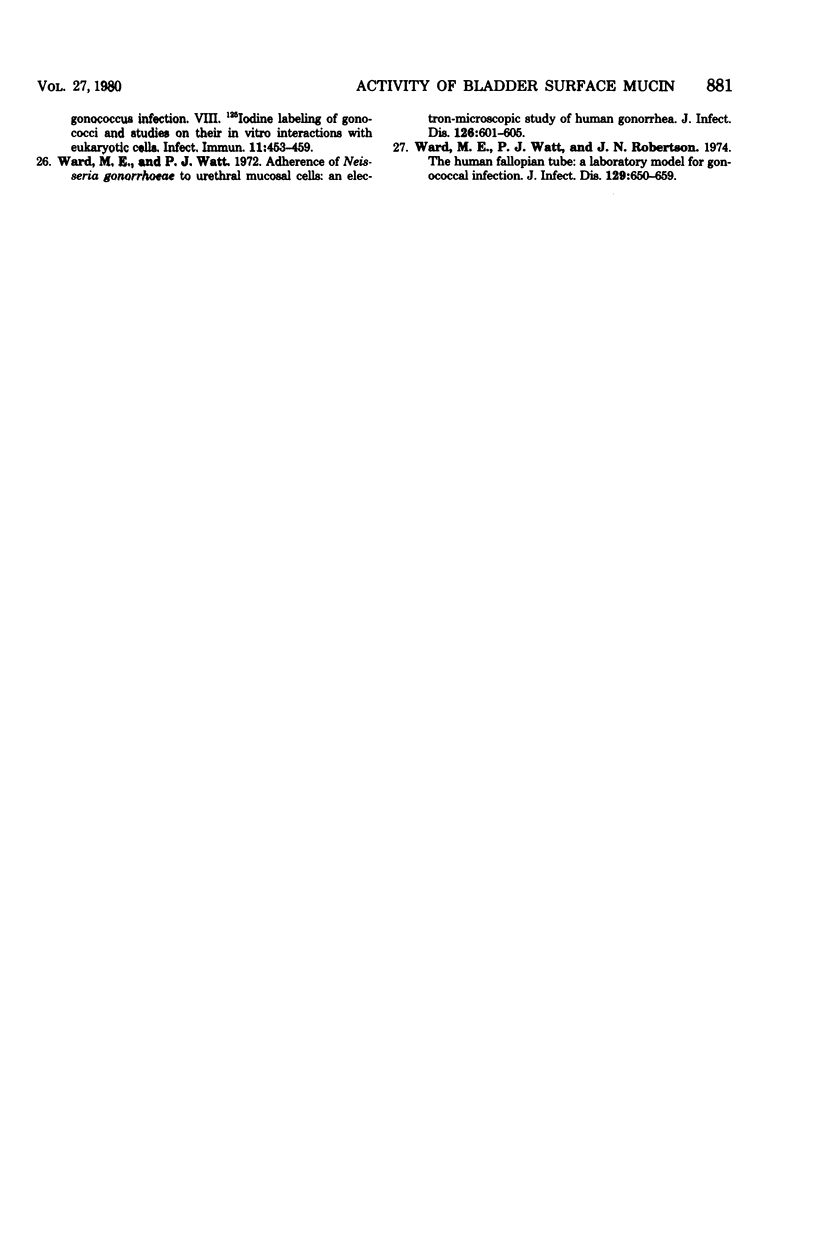
Selected References
These references are in PubMed. This may not be the complete list of references from this article.
- Buonassisi V., Root M. Enzymatic degradation of heparin-related mucopolysaccharides from the surface of endothelial cell cultures. Biochim Biophys Acta. 1975 Mar 14;385(1):1–10. doi: 10.1016/0304-4165(75)90067-7. [DOI] [PubMed] [Google Scholar]
- Buonassisi V. Sulfated mucopolysaccharide synthesis and secretion in endothelial cell cultures. Exp Cell Res. 1973 Feb;76(2):363–368. doi: 10.1016/0014-4827(73)90388-1. [DOI] [PubMed] [Google Scholar]
- COX C. E., HINMAN F., Jr Experiments with induced bacteriuria, vesical emptying and bacterial growth on the mechanism of bladder defense to infection. J Urol. 1961 Dec;86:739–748. doi: 10.1016/S0022-5347(17)65257-1. [DOI] [PubMed] [Google Scholar]
- Cobbs C. G., Kaye D. Antibacterial mechanisms in the urinary bladder. Yale J Biol Med. 1967 Oct;40(2):93–108. [PMC free article] [PubMed] [Google Scholar]
- Eden C. S., Eriksson B., Hanson L. A. Adhesion of Escherichia coli to human uroepithelial cells in vitro. Infect Immun. 1977 Dec;18(3):767–774. doi: 10.1128/iai.18.3.767-774.1977. [DOI] [PMC free article] [PubMed] [Google Scholar]
- Ellen R. P., Gibbons R. J. M protein-associated adherence of Streptococcus pyogenes to epithelial surfaces: prerequisite for virulence. Infect Immun. 1972 May;5(5):826–830. doi: 10.1128/iai.5.5.826-830.1972. [DOI] [PMC free article] [PubMed] [Google Scholar]
- Gibbons R. J., van Houte J. Selective bacterial adherence to oral epithelial surfaces and its role as an ecological determinant. Infect Immun. 1971 Apr;3(4):567–573. doi: 10.1128/iai.3.4.567-573.1971. [DOI] [PMC free article] [PubMed] [Google Scholar]
- Hanno P. M., Parsons C. L., Shrom S. H., Fritz R., Mulholland S. G. The protective effect of heparin in experimental bladder infection. J Surg Res. 1978 Oct;25(4):324–329. doi: 10.1016/0022-4804(78)90126-9. [DOI] [PubMed] [Google Scholar]
- Mulholland S. G., Foster E. A., Paquin A. J., Jr, Gillenwater J. Y. The effect of rabbit vesical mucosa on bacterial growth. Invest Urol. 1969 May;6(6):593–604. [PubMed] [Google Scholar]
- Norden C. W., Green G. M., Kass E. H. Antibacterial mechanisms of the urinary bladder. J Clin Invest. 1968 Dec;47(12):2689–2700. doi: 10.1172/JCI105952. [DOI] [PMC free article] [PubMed] [Google Scholar]
- Parsons C. L., Greenspan C., Moore S. W., Mulholland S. G. Role of surface mucin in primary antibacterial defense of bladder. Urology. 1977 Jan;9(1):48–52. doi: 10.1016/0090-4295(77)90284-9. [DOI] [PubMed] [Google Scholar]
- Parsons C. L., Greenspan C., Mulholland S. G. The primary antibacterial defense mechanism of the bladder. Invest Urol. 1975 Jul;13(1):72–78. [PubMed] [Google Scholar]
- Parsons C. L., Mulholland S. G., Anwar H. Antibacterial activity of bladder surface mucin duplicated by exogenous glycosaminoglycan (heparin). Infect Immun. 1979 May;24(2):552–557. doi: 10.1128/iai.24.2.552-557.1979. [DOI] [PMC free article] [PubMed] [Google Scholar]
- Parsons C. L., Mulholland S. G. Bladder surface mucin. Its antibacterial effect against various bacterial species. Am J Pathol. 1978 Nov;93(2):423–432. [PMC free article] [PubMed] [Google Scholar]
- Parsons C. L., Shrom S. H., Hanno P. M., Mulholland S. G. Bladder surface mucin. Examination of possible mechanisms for its antibacterial effect. Invest Urol. 1978 Nov;16(3):196–200. [PubMed] [Google Scholar]
- Punsalang A. P., Jr, Sawyer W. D. Role of pili in the virulence of Neisseria gonorrhoeae. Infect Immun. 1973 Aug;8(2):255–263. doi: 10.1128/iai.8.2.255-263.1973. [DOI] [PMC free article] [PubMed] [Google Scholar]
- Shrom S. H., Parsons C. L., Alavi A., Mulholland S. G. Vesical defense: assessment of adsorption potential with live, dead, and metabolically inhibited Escherichia coli and 99mTC-labeled sulfur colloid particles. Surg Forum. 1977;28:565–567. [PubMed] [Google Scholar]
- Shrom S. H., Parsons C. L., Mulholland S. G. Role of urothelial surface mucoprotein in intrinsic bladder defense. Urology. 1977 May;9(5):526–533. doi: 10.1016/0090-4295(77)90245-x. [DOI] [PubMed] [Google Scholar]
- Shrom S. H., Parsons C. L., Mulholland S. G. Vesical defense: further evidence for a charge-related mucosal anti-adherence mechanism. Surg Forum. 1978;29:632–633. [PubMed] [Google Scholar]
- Sobeslavsky O., Prescott B., Chanock R. M. Adsorption of Mycoplasma pneumoniae to neuraminic acid receptors of various cells and possible role in virulence. J Bacteriol. 1968 Sep;96(3):695–705. doi: 10.1128/jb.96.3.695-705.1968. [DOI] [PMC free article] [PubMed] [Google Scholar]
- Swanson J., King G., Zeligs B. Studies on gonococcus infection. VIII. 125Iodine labeling of gonococci and studies on their in vitro interactions with eukaryotic cells. Infect Immun. 1975 Mar;11(3):453–459. doi: 10.1128/iai.11.3.453-459.1975. [DOI] [PMC free article] [PubMed] [Google Scholar]
- Swanson J. Studies on gonococcus infection. IV. Pili: their role in attachment of gonococci to tissue culture cells. J Exp Med. 1973 Mar 1;137(3):571–589. doi: 10.1084/jem.137.3.571. [DOI] [PMC free article] [PubMed] [Google Scholar]
- Ward M. E., Watt P. J. Adherence of Neisseria gonorrhoeae to urethral mucosal cells: an electron-microscopic study of human gonorrhea. J Infect Dis. 1972 Dec;126(6):601–605. doi: 10.1093/infdis/126.6.601. [DOI] [PubMed] [Google Scholar]
- Ward M. E., Watt P. J., Robertson J. N. The human fallopian tube: a laboratory model for gonococcal infection. J Infect Dis. 1974 Jun;129(6):650–659. doi: 10.1093/infdis/129.6.650. [DOI] [PubMed] [Google Scholar]


